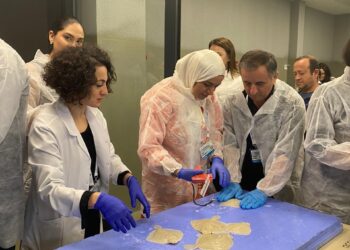Maritime Spatial Planning: Sustainability, Innovation and Challenges for the Outermost Regions – The European Commission, through its Directorate General for Maritime Affairs and Fisheries (DG Mare), has responded to the recommendations of the Advisory Council of Outermost Regions (ACPC) on Maritime Spatial Planning in the Outermost Regions (ORs). These areas, which include the Azores, Madeira and the Canary Islands, face unique challenges related to their geographical location and environmental and economic pressures.
Maritime spatial planning is confirmed as an essential strategic tool to balance the conservation of marine ecosystems with economic development. However, this need for balance becomes particularly complex in the presence of emerging activities such as offshore wind energy and marine protected areas (MPAs).
Offshore wind energy: opportunities and coexistence with fisheries
The transition to clean energy, through the development of offshore wind farms, represents an important opportunity to reduce carbon emissions. However, as DG Mare points out, it is crucial to integrate these infrastructures in a way that minimises interference with traditional fishing.
Thanks to European funds, including the Horizon Europe programme, research is being promoted to reduce the environmental impact and improve the socio-economic benefits of wind turbines. Examples of multiple use of maritime space, such as the cultivation of algae and shellfish near wind farms in Belgium, Germany and the Netherlands, show that forward-looking planning can create synergies between fisheries and renewables.
Marine protected areas: protection of biodiversity and impact on fisheries
Marine protected areas play a crucial role in the conservation of marine habitats, improving biodiversity and contributing to the recovery of fish stocks. However, the JRCUP emphasises the socio-economic impact of these measures on coastal communities, which often experience fishing restrictions.
A recent study by DG Mare highlighted that although the positive effects of MPAs take time to manifest themselves, in the medium to long term they can bring significant benefits to adjacent fisheries. It is therefore crucial to ensure transparent consultations and continuous dialogue with local communities, to mitigate possible conflicts and foster a participatory approach.
Supporting local communities: a pillar of European policies
The European Commission has reiterated the importance of supporting fishing communities in the ORs during the transition to new models of maritime spatial management. Economic compensation mechanisms and financial incentives are tools that Member States can use to ensure gradual and sustainable adaptation.
In parallel, initiatives such as the European Ocean Pact, announced by President Ursula von der Leyen, aim to strengthen cross-border cooperation and the implementation of innovative maritime spatial plans.
Towards a sustainable future for Europe’s seas
The integration of fisheries, renewable energies and environmental conservation is a complex challenge, but indispensable to ensure the sustainable use of maritime resources. Maritime spatial planning, if implemented with the involvement of local communities and the support of technological innovation, can be a virtuous model for balancing economic development and environmental protection.
Europe is charting a course towards a future where the sea is not just a resource, but a shared responsibility.
Maritime Spatial Planning: Sustainability, Innovation and Challenges for Outermost Regions








